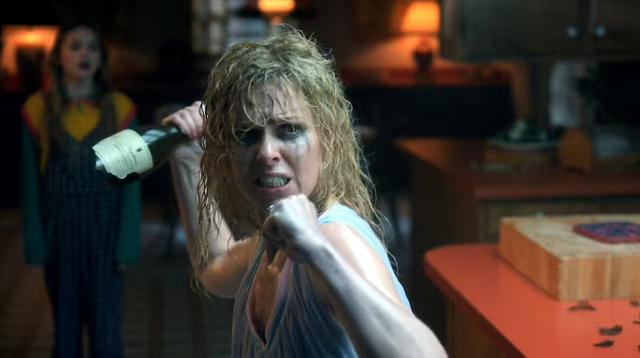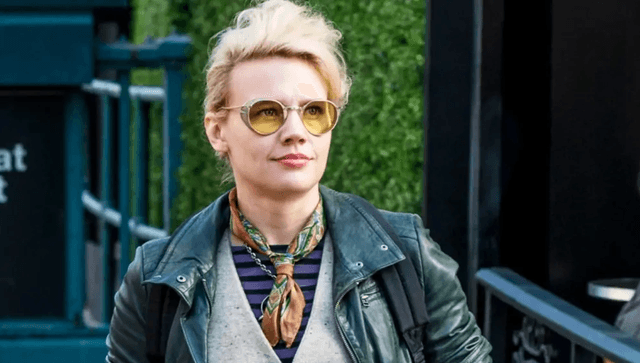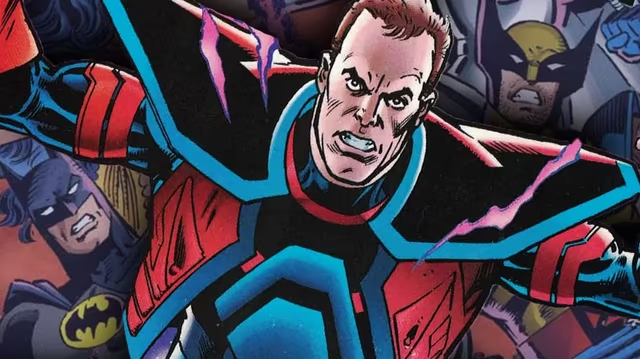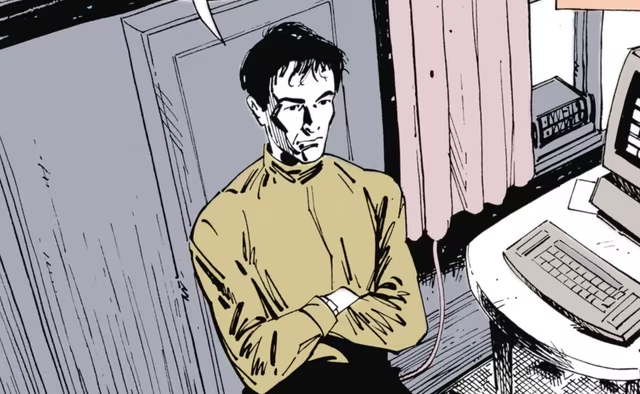If you click on a link and make a purchase we may receive a small commission. Read our editorial policy.
The end of DC's Flashpoint Beyond teases a return to the world of Watchmen, let's take a look at what that might mean
What does Nostalgia have to do with the future of DC's comic book output?

Just when you least expect it, DC is returning to the world of Watchmen, with a teaser at the end of this week’s Flashpoint Beyond #6 picking up plot threads left loose at the end of Geoff Johns and Gary Frank’s Doomsday Clock miniseries.
In the final pages of the issue, the Time Masters are seen discussing the after-effects of the recreation of the Flashpoint timeline, in a scene setting up future events in Johns’ new Justice Society of America series and beyond. The reborn team will, according to Time Masters leader Rip Hunter, “they’ll have to handle Degaton… we have nostalgia to worry about.” The scene then changes to two pages drawn by Frank, set in the Watchmen universe as a woman called Cleopatra Pak searches for someone she calls “The Watchman.”
This is actually Pak’s second appearance; she debuted in 2020’s Doomsday Clock #12, seen at a distance as Dr. Manhattan narrates: “Every day after school, a young orphan named Cleopatra Pak stands outside, obsessed by the rise and fall of Ozymandias. On her sixteenth birthday, with a fully-grown Bubastis at her side, Miss Pak will call herself Nostalgia.”

Nostalgia’s surprise appearance at the end of Flashpoint Beyond #6 isn’t the first connection between the series and Doomsday Clock; April’s #0 prelude featured the Mime and Marionette, two characters from the Watchmen universe that debuted in Doomsday Clock before finding themselves abandoned in the regular DC Universe at the end of that series.
DC’s return to the post-Watchmen continuity of Doomsday Clock is likely to produce discussion and controversy amongst fans of the original 1987 miniseries by Alan Moore and Dave Gibbons, not least of all because the very idea of continuing to use the Watchmen characters and concepts is itself a controversial one for many; the original comic was created under a contract wherein rights would revert to Moore and Gibbons following a certain period after the title had fallen out of print. The problem being, Watchmen has never been out of print due to its success as a collected edition, a format that barely existed at the point when the series was originated — indeed, Watchmen was one of the titles to help make collected editions a sales success in the first place.
The lack of rights reversion, in addition to DC selling Watchmen merchandise without Moore and Gibbons sharing in the proceeds (and, entirely separately, DC instituting a “Suggested for Mature Readers” tag on the covers of certain titles), led to Moore cutting ties with the publisher in the late 1980s, vowing never to work for them again — a stance that has only hardened in the years since, with Moore distancing himself further from Watchmen as a whole, disowning the work and all adaptations and derivatives of it to the point of rejecting an offer in the early 2000s by DC to revert the rights in exchange for offering approval to a potential comic book spin-off project.
DC, for its part, held off from exploiting the Watchmen property — outside of a long in-development feature film adaptation that eventually was released in 2009 with Zack Snyder as director — until 2012, when it launched Before Watchmen, a multi-series prequel project featuring creators including Darwyn Cooke, Jae Lee, and J. Michael Straczynski. Four years after that, the DC Universe Rebirth #1 special issue linked the Watchmen characters with the DC Universe for the first time, leading to 2017’s Doomsday Clock, a 12-issue series that deepened the connectivity between the two.
Doomsday Clock was a best-selling title throughout its run, despite delays in its release schedule, but it also ended with a seeming re-separation between the DCU and Watchmen as properties — something seemingly underscored by 2020’s Rorschach miniseries by Tom King and Jorge Fornés, which was entirely disconnected from both the DC Universe and Doomsday Clock as a whole.
Flashpoint Beyond, however, suggests that Watchmen will continue to be part of DC’s larger mythology moving forward on an ongoing basis, even if the venue for any continuation remains unclear. Although Flashpoint Beyond has completed its run, primary architect Johns is writing two titles spinning out of it — Justice Society of America and Stargirl: The Lost Children — with more teased; could a further Doomsday Clock sequel be one of those titles, or will Nostalgia, like Mime and Marionette before her, crossover into the DCU in her search for whoever and whatever the Watchman is?

Only time, and it seems Geoff Johns, will tell… somewhere.
The upcoming Justice Society and Stargirl relaunches are part of Johns’ New Golden Age line of comics at DC. Read more about them here.
Follow Popverse for upcoming event coverage and news
Find out how we conduct our review by reading our review policy
Let Popverse be your tour guide through the wilderness of pop culture
Sign in and let us help you find your new favorite thing.
















Comments
Want to join the discussion? Please activate your account first.
Visit Reedpop ID if you need to resend the confirmation email.